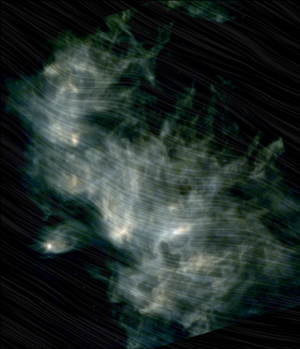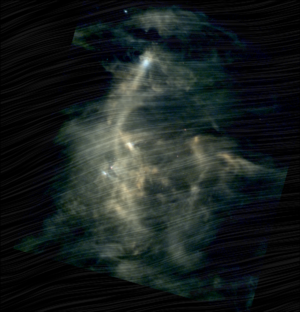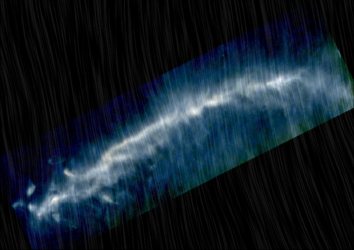Accept all cookies Accept only essential cookies See our Cookie Notice

About ESA
The European Space Agency (ESA) is Europe’s gateway to space. Its mission is to shape the development of Europe’s space capability and ensure that investment in space continues to deliver benefits to the citizens of Europe and the world.
Highlights
ESA - United space in Europe
This is ESA ESA facts Member States & Cooperating States Funding Director General Top management For Member State Delegations European vision European Space Policy ESA & EU Space Councils Responsibility & Sustainability Annual Report Calendar of meetings Corporate newsEstablishments & sites
ESA Headquarters ESA ESTEC ESA ESOC ESA ESRIN ESA EAC ESA ESAC Europe's Spaceport ESA ESEC ESA ECSAT Brussels Office Washington OfficeWorking with ESA
Business with ESA ESA Commercialisation Gateway Law at ESA Careers Cyber resilience at ESA IT at ESA Newsroom Partnerships Merchandising Licence Education Open Space Innovation Platform Integrity and Reporting Administrative Tribunal Health and SafetyMore about ESA
History ESA Historical Archives Exhibitions Publications Art & Culture ESA Merchandise Kids Diversity ESA Brand Centre ESA ChampionsLatest
Space in Member States
Find out more about space activities in our 23 Member States, and understand how ESA works together with their national agencies, institutions and organisations.
Science & Exploration
Exploring our Solar System and unlocking the secrets of the Universe
Go to topicAstronauts
Missions
Juice Euclid Webb Solar Orbiter BepiColombo Gaia ExoMars Cheops Exoplanet missions More missionsActivities
International Space Station Orion service module Gateway Concordia Caves & Pangaea BenefitsLatest
Space Safety
Protecting life and infrastructure on Earth and in orbit
Go to topicAsteroids
Asteroids and Planetary Defence Asteroid danger explained Flyeye telescope: asteroid detection Hera mission: asteroid deflection Near-Earth Object Coordination CentreSpace junk
About space debris Space debris by the numbers Space Environment Report In space refuelling, refurbishing and removingSafety from space
Clean Space ecodesign Zero Debris Technologies Space for Earth Supporting Sustainable DevelopmentLatest
Applications
Using space to benefit citizens and meet future challenges on Earth
Go to topicObserving the Earth
Observing the Earth Future EO Copernicus Meteorology Space for our climate Satellite missionsCommercialisation
ESA Commercialisation Gateway Open Space Innovation Platform Business Incubation ESA Space SolutionsLatest
Enabling & Support
Making space accessible and developing the technologies for the future
Go to topicBuilding missions
Space Engineering and Technology Test centre Laboratories Concurrent Design Facility Preparing for the future Shaping the Future Discovery and Preparation Advanced Concepts TeamSpace transportation
Space Transportation Ariane Vega Space Rider Future space transportation Boost! Europe's Spaceport Launches from Europe's Spaceport from 2012Latest

Star formation in the Chamaeleon
Thank you for liking
You have already liked this page, you can only like it once!
A dark cloud when observed with optical telescopes, the Chamaeleon I region reveals itself as an active hub of star formation in this far-infrared image from ESA’s Herschel space observatory. Only around 550 light-years away in the southern constellation of Chamaeleon, it is one of the closest areas where stars are bursting into life.
Launched in 2009, Herschel observed the sky at far-infrared and submillimetre wavelengths until 2013. Sensitive to the heat from the small fraction of cold dust mixed in with the clouds of gas where stars form, it provided unprecedented views of the interstellar material that pervades our Milky Way galaxy.
Herschel’s extraordinary scans uncovered a vast and intricate network of filamentary structures everywhere in the Galaxy, confirming that filaments are crucial elements in the process of star formation.
After a filamentary web arises from turbulent motions of gas in the interstellar material, gravity takes over, but only in the densest filaments, which become unstable and fragment into compact objects – the seeds of future stars.
Chamaeleon I is no exception, with several elongated structures weaving their way through the cloud. Most of the star-forming activity is taking place at the convergence of filaments – in the bright area towards the top right and in the vaster region just left of the image centre, sprinkled with newborn stars that are heating up the material in their surroundings.
Analysing images like this, astronomers have identified more than 200 young stars in this two million year-old cloud. Most of these stars are still surrounded by a disc of leftover material from the formation process, which may evolve and later give rise to planets.
Owing to its relative vicinity, Chamaeleon I is an ideal laboratory to explore protoplanetary discs and their properties using Herschel data.
This image was first published in a paper by Á. Ribas et al. (2013), which presents a study of protoplanetary discs in this region. It was also shared as a #HerschelMoment during a public campaign on Twitter to celebrate the legacy of ESA's observatory in September 2017.
This three-colour image combines Herschel observations at 70 microns (blue), 160 microns (green) and 250 microns (red), and spans about 2.5º on the long side; north is to the right and east is up.
-
CREDIT
ESA/Herschel; acknowledgement: Á. Ribas -
LICENCE
ESA Standard Licence

Chamaeleon II molecular cloud viewed by Herschel and Planck

Chamaeleon I molecular cloud viewed by Herschel and Planck

The Musca molecular clouds viewed by Herschel and Planck

Herschel’s view of a star nursery















 Germany
Germany
 Austria
Austria
 Belgium
Belgium
 Denmark
Denmark
 Spain
Spain
 Estonia
Estonia
 Finland
Finland
 France
France
 Greece
Greece
 Hungary
Hungary
 Ireland
Ireland
 Italy
Italy
 Luxembourg
Luxembourg
 Norway
Norway
 The Netherlands
The Netherlands
 Poland
Poland
 Portugal
Portugal
 Czechia
Czechia
 Romania
Romania
 United Kingdom
United Kingdom
 Slovenia
Slovenia
 Sweden
Sweden
 Switzerland
Switzerland
























